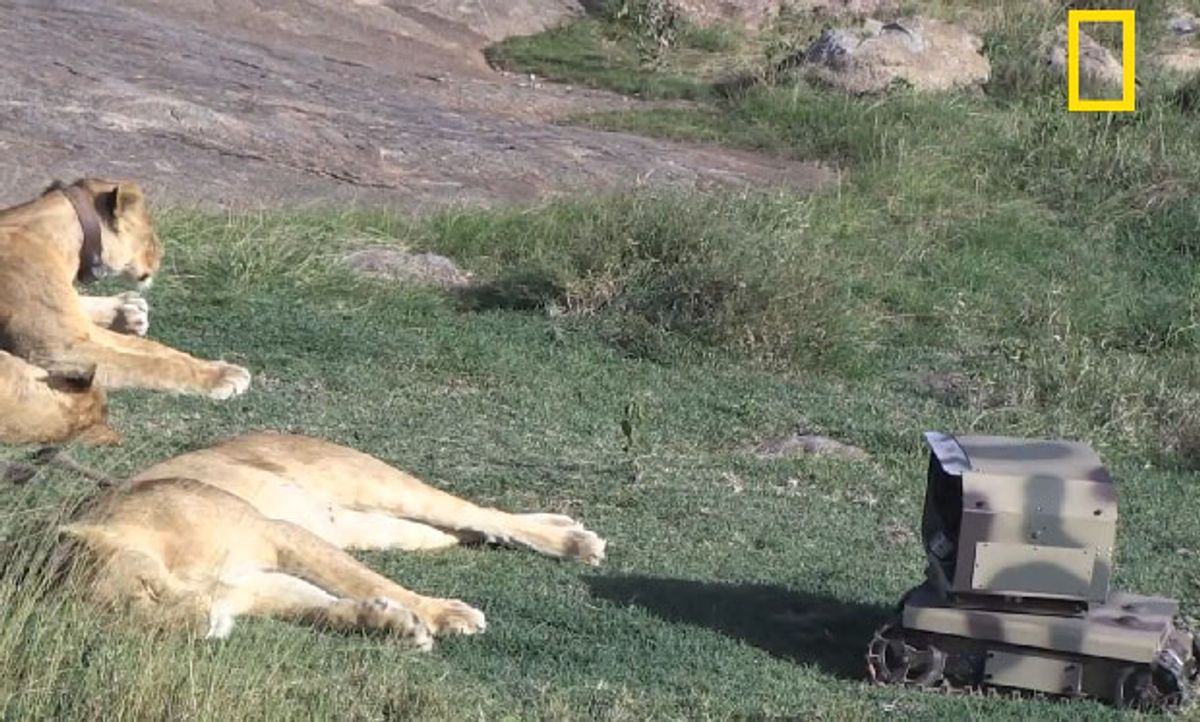There is most definitely such a thing as getting way too close to lions. Way too close means close enough that lions can chase you down and tackle you and bite your legs off. Don't let this happen to you. Next time you find yourself in the Serengeti trying to snap the perfect lion picture, just do what the pros over at National Geographic do and enlist the assistance of a little tracked camera robot.
There's even better footage of the robot on the NatGeo website, although, be warned, when we say that some of these lion encounters are intimate, we mean intimate. Yeeeah. Slightly creepy robot, no?
This is not the first time humans use robots to spy on wild animals. We've seen robotic cameras used to film lions before (though not as close), as well as penguins, zebras, and bonobos.
Photographer Michael "Nick" Nichols talked to NatGeo about how he made all of this stuff work; we've reposted a few of the robotics-heavy answers below, and you can read the full interview here.
Why did you decide to use a remote-controlled camera robot?You don't want to be looking down on animals: They hate it; it is demeaning to them. Old zoos put the animals in pits, but if you go to a modern zoo you look up at the tigers. That makes their lives better; it makes them feel like king of the beasts. I couldn't bear photographing lions looking down on them; it made me sick to my stomach. I wanted to photograph them at their level or lower.So we had a ground-level robot, basically a mini remote-controlled tank. It was from a company that makes them to defuse bombs and stuff like that, called SuperDroid Robots.We had no idea when we started two years ago if we could actually do it, but when you think about lions and who they are, they are so supremely confident that they could give a **** about this robot. An elephant would stomp it or run away, and all other animals would run away.After only three visits they didn't care about that tank. At first they were cautious. Some of the most cautious ones moved to the back of the family. But after five or six times they were all falling asleep with it.How did the micro-drone work out?We had a MikroKopter to give us a view of the Serengeti without bringing in a helicopter. Those are dangerous. They require a lot of permits to fly low, and they make a lot of noise and smoke, which scares lions away. Using planes and helicopters was a life of frustration. You have to hire them in advance, so you never have them when you need them.At first the lions were a little spooked [by the MikroKopter], but then they seemed to have fun with it. One time one of the pride even jumped and tried to grab it. They seemed to know [the remote-controlled devices] came from us; they saw our green car, and they knew we didn't prevent them from getting a meal. So we could fly over these lions when they were sleeping. We crashed it a few times and had to replace it.
That's the nice thing about robots, though: you can crash them, or a lion can take a chunk out of one, and you can just buy a new one. It's a much better solution than an emergency airlift to the nearest hospital to try to find someone who can stitch your legs back on.
Via [ National Geographic ]
Evan Ackerman is a senior editor at IEEE Spectrum. Since 2007, he has written over 6,000 articles on robotics and technology. He has a degree in Martian geology and is excellent at playing bagpipes.



